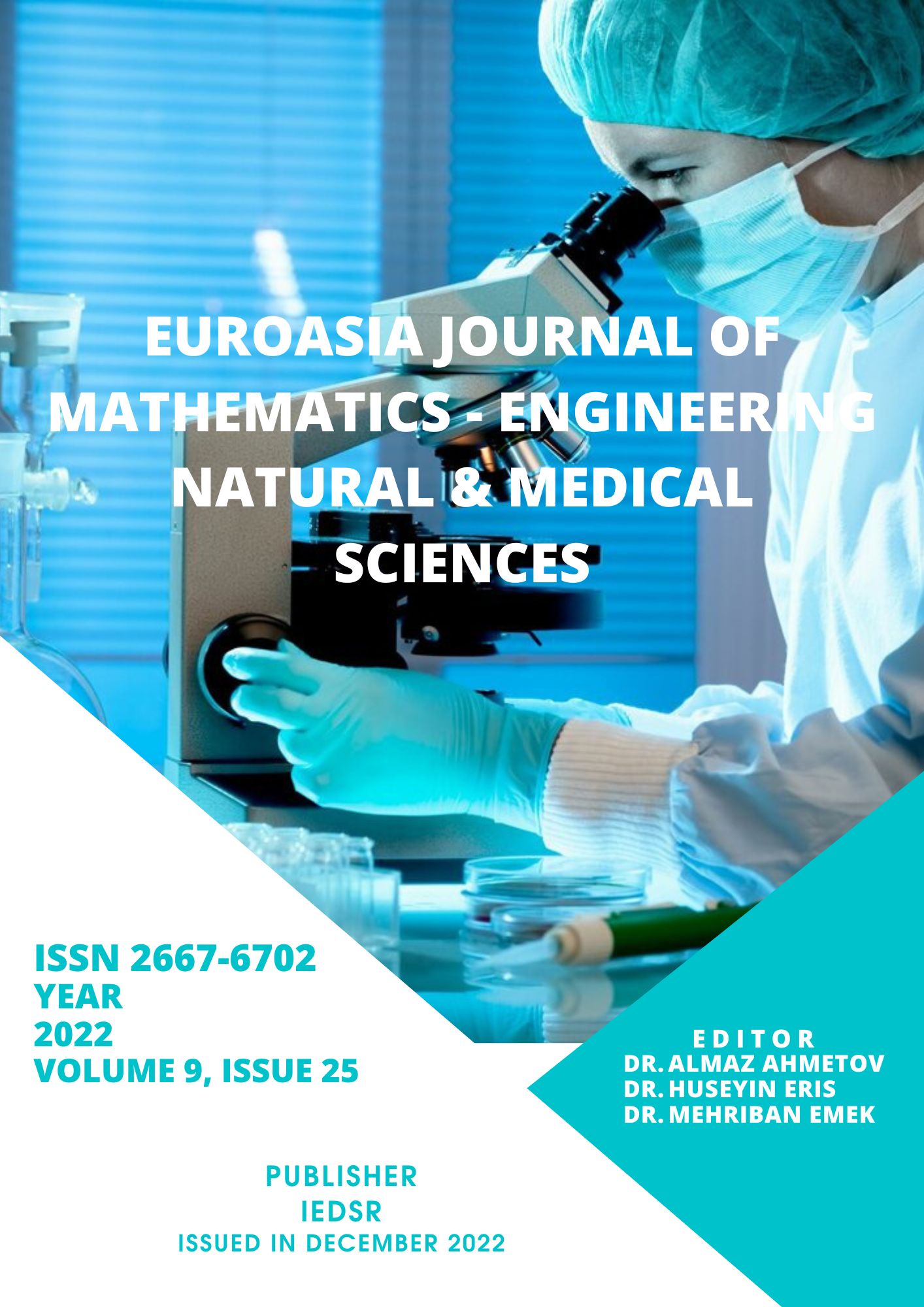One-Day Experiences of Nursing Students with Stoma Bags: Social and Emotional Learning Example
Stoma Bags Awareness Study
DOI:
https://doi.org/10.5281/zenodo.7496412Keywords:
Intestinal stoma, Stoma bag, Awareness, Nursing studentsAbstract
This study is an awareness study developed for nursing students to understand the physiological, psychological and social feelings of patients with stoma. The research was planned as a single group pre-test and post-test. Thirty three nursing students volunteered to participate in the study. Students were asked to wear the stoma bag during clinical practice. A 21-item questionnaire was used to evaluate the students' views and experiences about the stoma bag. This form was applied one day before insertion of the stoma bag and immediately after removal. Number, percentage and chi-square tests were used to evaluate the data. It is seen that the number of students who stated their feelings of sadness, fear and discomfort after the application increased compared to before the application. Most of the students did not want to share the presence of stoma with their friends due to "embarrassment and shyness" (21.0%). The students stated that after removing the stoma bag, they felt highly relieved (63.6%) and prayed to God (24.2%) because they were healthy. The findings of the students' experiences show that they understand these patients. Nursing is a profession that requires compassion and empathy and adopts a holistic approach to the patient. Nursing is a profession that requires compassion and empathy and adopts a holistic approach to the patient. It is recommended to carry out such studies in terms of individual development and improving the patient-nurse relationship.
References
Shelton G. Appraising Travelbee's Human-to-Human Relationship Model. J Adv Pract Oncol. 2016;7(6):657-661.
Taylan S, Akıl Y, Cihan R, Arslan S. Nurses’ awareness as a result of short term stoma bag life experience The effect of stomatal baggage experience on nurses awareness. International Journal of Human Sciences. 2017; 14(3), 2208-2218.
Azak A. Determining Mindfulness Levels in Nursing Students. Journal of Education and Research in Nursing. 2018; 15(3),170-176. http://doi.org/10.5222/HEAD.2018.170
Williams J, Stickley T. Empathy and nurse education. Nurse Education Today. 2010; 30(8), 752-755. https://doi.org/10.1016/j.nedt.2010.01.018
Reynolds W, Scott PA, Austin W. Nursing, empathy and perception of the moral. Journal of Advanced Nursing. 2000; 32(1), 235-242. https://doi.org/10.1046/j.1365-2648.2000.01440.x
Vilz TO, V Websky M, Kalff JC, Stoffels B. Intestinale Stomata [Intestinal stomata]. Chirurg. 2020;91(3):269-280. doi:10.1007/s00104-020-01144-4
Suggested citation: American Cancer Society, Cancer Facts and Figures (2016). Atlanta: American Cancer Society; Accessed November 28, 2019. <https://www.cancer.org/research/cancer-facts-statistics/all-cancer-facts-figures/cancer-facts-figures-2016.html>.
Grant M, McCorkle R, Hornbrook MC, Wendel CS, Krouse R. Development of a chronic care ostomy self-management program. Journal of Cancer Education. 2013; 28(1), 70-78. http://doi.org/10.1007/s13187-012-0433-1
Sharpe L, Patel D, Clarke S. The relationship between body image disturbance and distress in colorectal cancer patients with and without stomas. Journal of Psychosomatic Research. 2011; 70, 395–402. https://doi.org/10.1016/j.jpsychores.2010.11.003
Hubbard G, Taylor C, Beeken B, Campbell A, Gracey J, Grimmett C, et. al. Research priorities about stoma‐related quality of life from the perspective of people with a stoma: A pilot survey. Health Expectations. 2017; 20(6), 1421-1427. https://doi.org/10.1111/hex.12585
Brown H, Randle J. Living with a stoma: a review of the literature. Journal of Clinical Nursing. 2005; 14(1), 74-81. http://doi.org/10.1111/j.1365-2702.2004.00945.x.
Kilic E, Taycan O, Bellı AK, Özmen M. The Effect of Permanent Ostomy Surgery on Body Perception, Self – Esteem, Spouse Harmony and Sexual Functions. Turkish Journal of Psychiatry. 2007; 18(4), 302-10.
Tao H, Songwathana P, Isaramalai SA, Zhang Y. Personal awareness and behavioural choices on having a stoma: a qualitative metasynthesis. Journal of Clinical Nursing. 2014; 23(9-10),1186-1200. http://doi.org/10..1111/jocn.12309
Karadag A, Öztürk D, Çelik B. Adaptation of the quality of life scale for individuals with ostomy into Turkish. Turkish Journal Colorectal Diseases. 2011; 21, 173-181. Doı: http://doi.org/10.5505/KRHD.2011.66588
Lim SH, Chan SWC, He HG. Patients Experiences of Performing Self-care of Stomas in the Initial Postoperative Period. Cancer Nursing. 2015; 38(3), 185-193. https://doi.org/10.1097/NCC.0000000000000158.
Sinclair LG. Young adults with permanent ileostomies: experiences during the first 4 years after surgery. Journal of Wound Ostomy & Continence Nursing. 2009; 36(3), 306-316. https://doi.org/10.1097/won.0b013e3181a1a1c5
Russell S. Physical activity and exercise after stoma surgery: overcoming the barriers. British Journal of Nursing. 2017; 26(5), 20-26. https://doi.org/10.12968/bjon.2017.26.5.S20
Honkala S, Bertero C. Living with € an ostomy: women’s long term experiences. Nordic Journal of Nursing Research. 2009; 29, 19–22. https://doi.org/10.1177/010740830902900205
Andersson G, Engstrom A, Soderberg S. A chance to live: women’s experiences of living with a colostomy after rectal cancer surgery. International Journal of Nursing Practice. 2010; 16, 603–608. http://dx.doi.org/10.1111/j.1440-172X.2010.01887.x
Manderson L. Boundary breaches: the body, sex and sexuality after stoma surgery. Social Science & Medicine. 2005; 61, 405–415. https://doi.org/10.1016/j.socscimed.2004.11.051
Simmons KL. A view from here: psychosocial issues in colostomy care. Journal of Wound Ostomy & Continence Nursing. 2014; 41(1), 55-59. https://doi.org/10.1097/01.WON.0000438015.98357.53
Grant M, McMullen CK, Altschuler A, Mohler MJ, Hornbrook MC, Herrinton LJ, Wendel CS, Baldwin CM, Krouse RS. Gender differences in quality of life among long-term colorectal cancer survivors with ostomies. Oncology Nursing Forum. 2011; 38, 587–596. http://doi.org/10.1188/11.ONF.587-596
Williams J, Stickley T. Empathy and nurse education. Nurse Education Today. 2010; 30(8), 752-755. https://doi.org/10.1016/j.nedt.2010.01.018
Reynolds W, Scott PA, Austin W. Nursing, empathy and perception of the moral. Journal of Advanced Nursing. 2000; 32(1), 235-242. https://doi.org/10.1046/j.1365-2648.2000.01440.x
Kunyk D, Olson JK. Clarification of conceptualizations of empathy. Journal of Advanced Nursing. 2001; 35(3), 317-325. https://doi.org/10.1046/j.1365-2648.2001.01848.x
Ward J, Cody J, Schaal M, Hojat M. The empathy enigma: an empirical study of decline in empathy among undergraduate nursing students. Journal of Professional Nursing. 2012; 28(1), 34-40. https://doi.org/10.1016/j.profnurs.2011.10.007
Downloads
Published
How to Cite
Issue
Section
License
Copyright (c) 2022 Euroasia Journal of Mathematics, Engineering, Natural & Medical Sciences

This work is licensed under a Creative Commons Attribution-NonCommercial 4.0 International License.


